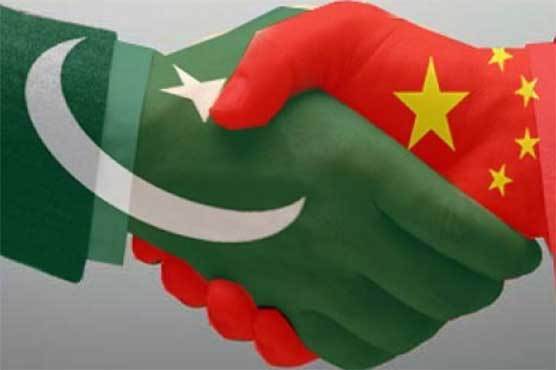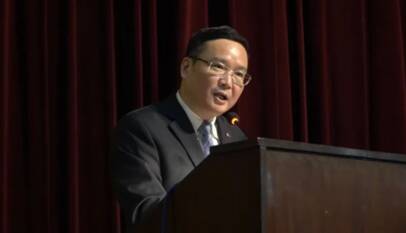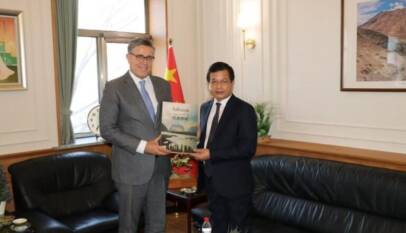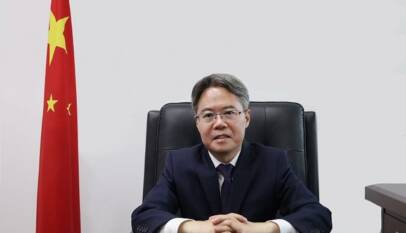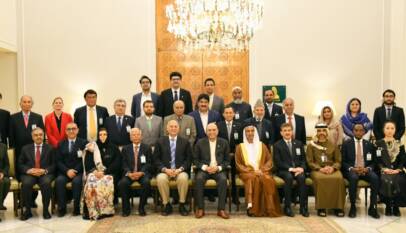CPFTA-II holds the capacity to curb inflation, boost exports and take CPEC forward
China-Pakistan Economic Corridor (CPEC) and China-Pakistan Free Trade Agreement (CPFTA) can play a crucial role in curtailing the steadily rising inflation in Pakistan. The year-on-year inflation rate recorded figures indicate that inflation slightly fell in December 2019 and reached 12.63 from 12.67 earlier in November 2019. Under the CPFTA-II the trade irregularities between bilateral trade of China and Pakistan would be eliminated, and Pakistan would witness a rise in its exports to China. According to the protocol of CPFTA-II, both countries have agreed on zero duty tariffs on 75% of the taxable goods and products. Advisor to PM on Commerce and Textile, Abdul Razak Dawood quoted that under revised FTA, Pakistan’s exports are projected to rise 20%. The CPFTA-II’s systematic implementation would enhance the trade ties between the two strategic partners and would also be beneficial in the developmental projects of CPEC. Moreover, Pakistan should also focus on adopting the steps taken by China for alleviating poverty from the country.
Pakistan’s economy had a bumpy year in 2019, with surging inflation and debt problems, but it has started to show some positive signs. Standing at the crossroads of 2020, the iron brothers – China and Pakistan – expect to work hand-in-hand helping Pakistan to make an economic comeback.
Pakistan’s year-on-year inflation rate recorded a marginal drop in December to 12.63 percent, compared with 12.67 percent in November. However, despite the decline, the country’s inflation rate remains high. Prices for food products such as tomatoes, onions and fresh vegetables, together with soaring fuel prices, drove up inflation on a yearly basis.
Pakistan has to build up a solid economy that could provide a buffer for the government to utilize various tools to quell inflation.
A China-Pakistan free trade agreement (FTA) and the China-Pakistan Economic Corridor (CPEC) can play an important part in leading Pakistan’s economy to prosperity.
The tariff arrangement documented in the second phase of the China-Pakistan FTA, which was signed by leaders of the two countries in April, came into force on the first day of 2020. According to the new protocol, both countries will lower tariffs to zero on 75 percent of taxable items in their tariff catalogs. The upgraded FTA will further free up bilateral trade.
Pakistan’s exports to China are expected to grow under the second phase of the FTA and narrow the bilateral trade imbalance. The Pakistani Prime Minister’s Advisor on Commerce and Textile, Abdul Razak Dawood, reportedly said Pakistan’s exports to China have the potential to grow 20 times under the new FTA.
Significantly lower tariffs between the two countries will deepen trade ties, effectively promoting the construction of the CPEC. China is investing billions via the CPEC, which is boosting local infrastructure. By building road networks and electricity facilities, the CPEC enables Pakistan to develop in multiple industries including manufacturing and tourism, and improve living standards.
Amid high inflation, Pakistan should focus on poverty reduction as well. China’s poverty reduction effort has come a long way and shown great success. China’s experience can shed light on other developing countries’ paths, such as Pakistan. China is willing to share its experience and conduct cooperative projects to help Pakistan in poverty alleviation and sustainable growth.
Pakistan needs to maximize the benefits from the second phase of the China-Pakistan FTA and CPEC in 2020. More balanced trade and infrastructure will give Pakistan the weapons to fight inflation, reduce poverty and eventually thrive.
Chinese Ambassador highlights significance of Third Plenary Session for China-Pakistan cooperation
The Third Plenary Session of the 20th Central Committee of the Communist Party of China ha…



